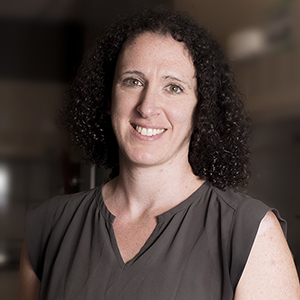Caroline Saouma

INORGANIC CHEMISTRY
Assistant Professor
B.S., Massachusetts Institute of Technology, 2005
Ph.D., California Institute of Technology, 2011
NIH NRSA Postdoctoral Fellow, University of Washington, 2011-2014
Phone: (801) 585-7335
Office: 4424 TBBC
Email: caroline.saouma@utah.edu
Research Group
Activities & Awards
- ACS Division of Inorganic Chemistry Young Investigator Award, 2012
- NIH Ruth L. Kirschstein F32 Postdoctoral Fellowship, 2011-2014
- Organometallics Gordon Research Seminar Co-Chair, 2011
- NSF Graduate Research Fellowship, 2006-2009
Research Interests
The increase in worldwide demand for energy, coupled with the proposed role of CO2 on global warming and the eventual depletion of fossil fuels, necessitates the development of new technologies for the efficient conversion of energy. My research program is focused on developing a fundamental understanding of transition-metal mediated small molecule activation, as it pertains to energy conversion and green synthetic applications. Using motifs found in Nature, we will design and develop transition metal complexes that will allow us to test ideas on how to selectively achieve complex multi-e–/multi-H+ chemical transformations at low over-potentials. Topics of current interest include (i) activation of O2 for fuel cell and synthetic applications, and (ii) electrocatalytic CO2 fixation and CO2 reduction to methanol. Detailed reactivity and mechanistic studies will be combined with a wealth of data from spectroscopic and structural techniques to provide insights to these transformations, which will allow for the rational design of functional catalysts. Members of my group will become proficient in a variety of techniques, for example: (i) organic/inorganic synthesis (including glove-box, Schlenk, and high-vacuum techniques), (ii) multi-nuclear and VT-NMR, IR, and UV-vis spectroscopy, (iii) electrochemistry, (iv) single crystal X-ray diffraction, and (v) analysis of kinetic data. Other techniques such as EPR spectroscopy, SQUID magnetometry, and DFT calculations may also be utilized.
Selected Publications
- Saouma, C. T.; Lu, C. C.; Day, M. W.; Peters, J. C. Solvent-Mediated Control of the CO2 Reduction Profile by Fe(I): C-O Cleavage Versus C-C Coupling. Chem. Sci.2013, DOI: 10.1039/C3SC51262B.
- Saouma, C. T.; Lu, C. C.; Peters, J. C. Mononuclear Five- and Six-Coordinate Iron Hydrazido and Hydrazine Species. Inorg. Chem.2012, 51, 10043 – 10054.
- Kinney, R. A.; Saouma, C. T.; Peters, J. C.; Hoffman, B. M. Modeling the Signatures of Hydrides in Metalloenzymes: ENDOR Analysis of a Di-iron Fe(μ–NH)(μ–H)Fe Core. J. Am. Chem. Soc.2012, 134, 12637 – 12647.
- Saouma, C. T.; Kaminsky, W.; Mayer, J. M. Protonation and Concerted Proton–Electron Transfer Reactivity of a Bis-Benzimidazolate Ligated [2Fe–2S] Model for Rieske Clusters. J. Am. Chem. Soc.2012, 134, 7293 – 7296.
- Saouma, C. T.; Moore, C. E.; Rheingold, A. L.; Peters, J. C. A Five–Coordinate Phosphino/Acetate Iron(II) Scaffold That Binds N2, N2H2, N2H4, and NH3 in the Sixth Site. Inorg. Chem.2011, 50, 11285 – 11287.
- Saouma, C. T.; Peters, J. C. M≡E and M=E Complexes of Iron and Cobalt that Emphasize Three-Fold Symmetry (E = O, N, NR). Coord. Chem. Rev.2011, 255, 920 – 937.
- Saouma, C. T.; Kinney, R. A.; Hoffman, B. M.; Peters, J. C. Transformation of an [Fe(η2–N2H3)]+ Species to π–Delocalized [Fe2(μ–N2H2)]2+/+ Complexes. Angew. Chem. Int. Ed.2011, 50, 3446 – 3449.
- Saouma, C. T.; Müller, P.; Peters, J. C. Characterization of Structurally Unusual Diiron NxHy Complexes. J. Am. Chem. Soc.2009, 131, 10358 – 10359.
